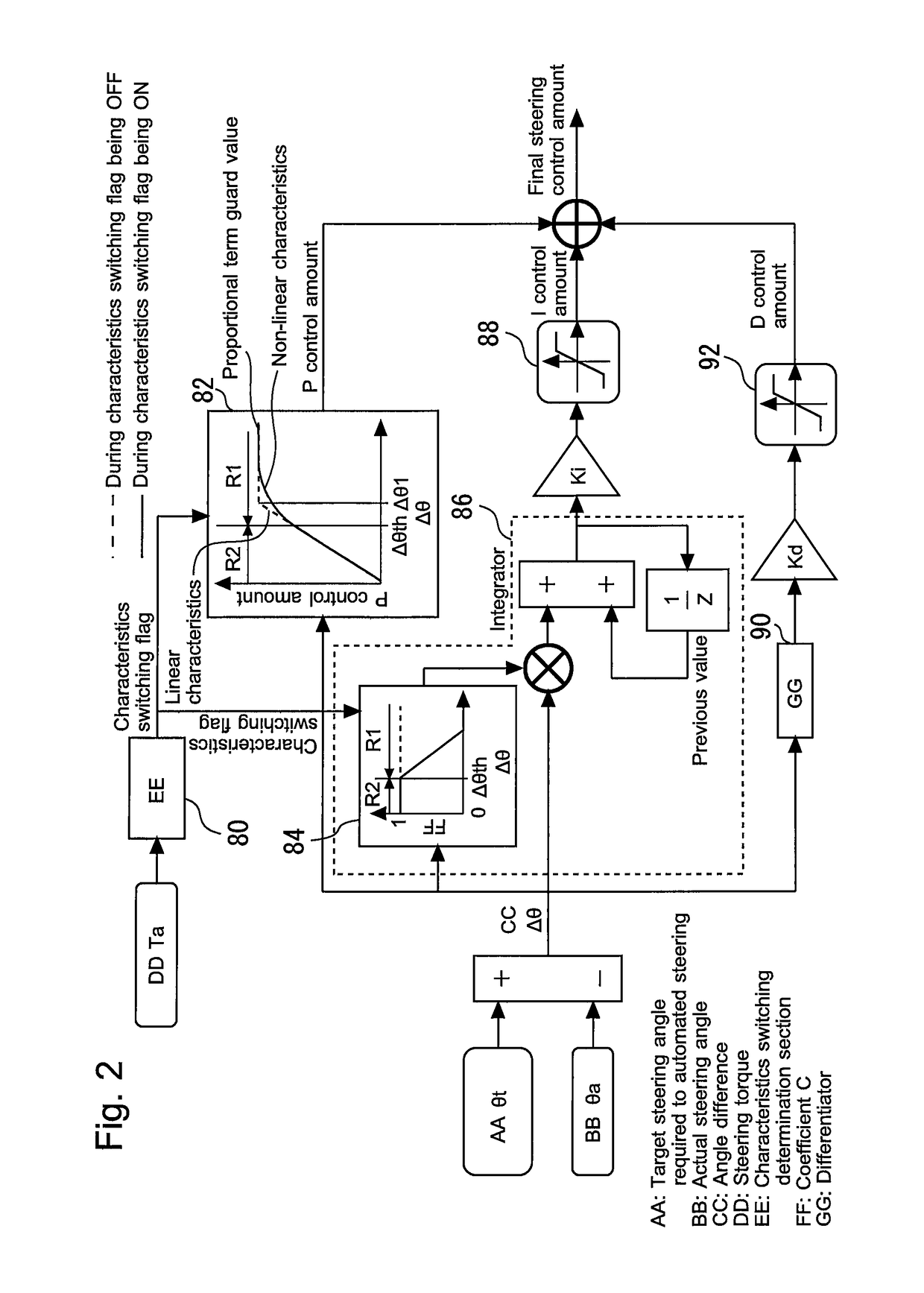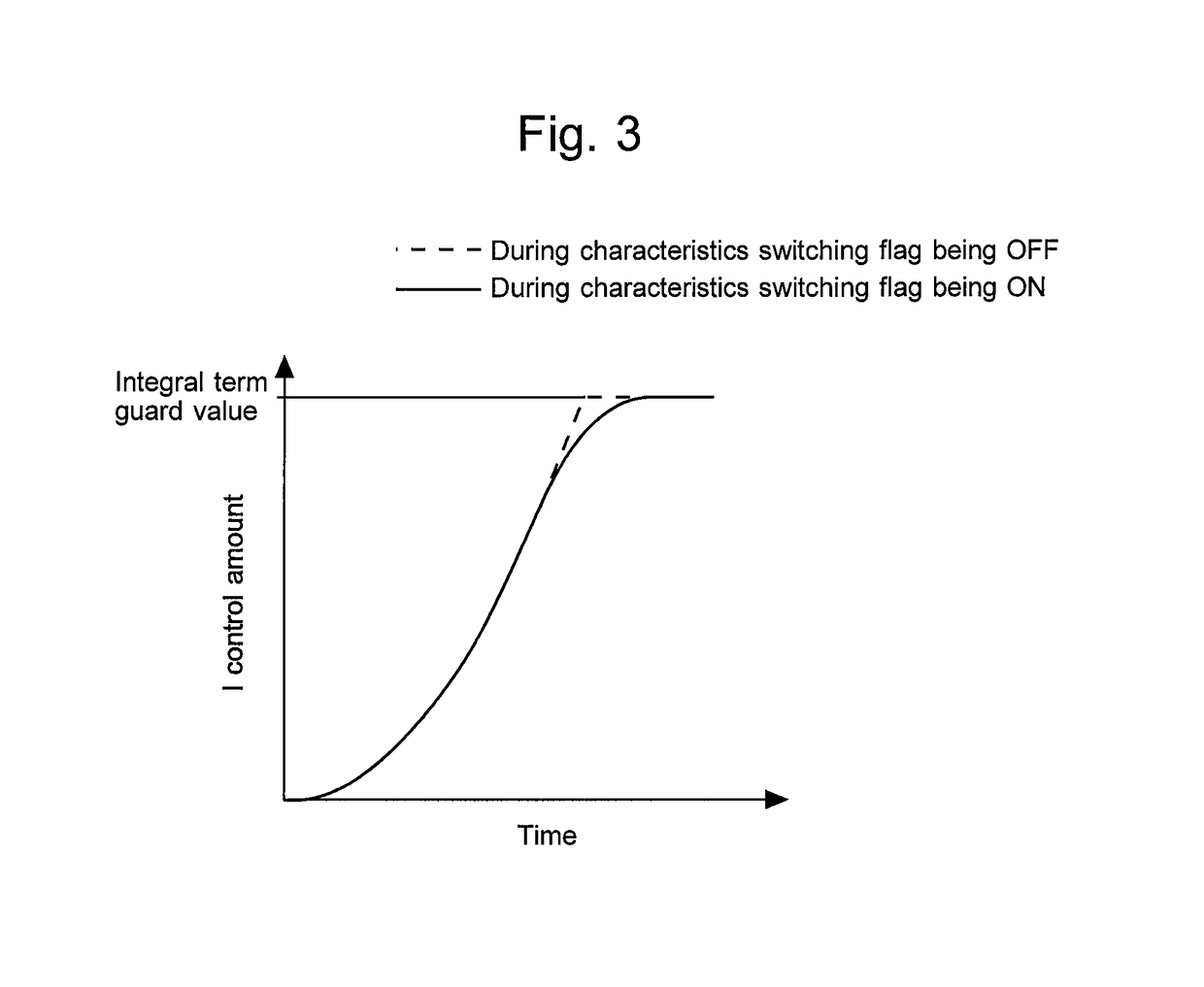Driver assistance system for vehicle
a technology for driving assistance and vehicles, applied in the direction of non-mechanical steering control, transportation and packaging, non-vehicle mounted steering controls, etc., can solve the problems of increasing angle differences, affecting the operation of steering wheels, and affecting the safety of drivers, so as to prevent the rapid change of integral terms and rapid change of control amount of steering torque. , the effect of rapid change of proportional terms
- Summary
- Abstract
- Description
- Claims
- Application Information
AI Technical Summary
Benefits of technology
Problems solved by technology
Method used
Image
Examples
first embodiment
[0040]First, a first embodiment of the present disclosure will be described with reference to FIGS. 1 to 4.
[Example of Configuration of Vehicle Equipped with Driver Assistance System]
[0041]FIG. 1 is a schematic diagram that illustrates a configuration example of a vehicle 10 to which the driver assistance system according to a first embodiment of the present disclosure is applied. As shown in FIG. 1, the vehicle 10 is equipped with two front wheels 12 and two rear wheels 14.
[0042]The vehicle 10 is provided with a steering device 20. The steering device 20 is used to turn the two front wheels 12. More specifically, the steering device 20 includes a steering wheel 22, a steering shaft 24, a pinion gear 26, a rack bar 28, tie rods 30 and an electric power steering device (hereafter, referred to as an “EPS (Electric Power Steering) device”) 40. It should be noted that the driver assistance system according to the present embodiment can also be applied to an example of 4WS (Four Wheel St...
second embodiment
[0110]Next, a second embodiment according to the present disclosure will be described with reference to FIG. 6. It is assumed that, in the following description, the driver assistance system according to the second embodiment is applied to, for example, the vehicle 10 having the configuration shown in FIG. 1, as with the driver assistance system according to the first embodiment.
[Steering Control According to Second Embodiment]
[0111]The steering control according to the present embodiment is basically the same as the steering control according to the first embodiment, except that the following routine shown in FIG. 6 is used instead of the routine shown in FIG. 4.
[0112]In the first embodiment described above, if the steering torque Ta is smaller than or equal to the threshold value Tth2, the PI control amount characteristics 2 is changed to the PI control amount characteristics 1. In contrast to this, in the present embodiment, if the absolute value of the angle difference Δθ is sma...
PUM
 Login to View More
Login to View More Abstract
Description
Claims
Application Information
 Login to View More
Login to View More - R&D
- Intellectual Property
- Life Sciences
- Materials
- Tech Scout
- Unparalleled Data Quality
- Higher Quality Content
- 60% Fewer Hallucinations
Browse by: Latest US Patents, China's latest patents, Technical Efficacy Thesaurus, Application Domain, Technology Topic, Popular Technical Reports.
© 2025 PatSnap. All rights reserved.Legal|Privacy policy|Modern Slavery Act Transparency Statement|Sitemap|About US| Contact US: help@patsnap.com



